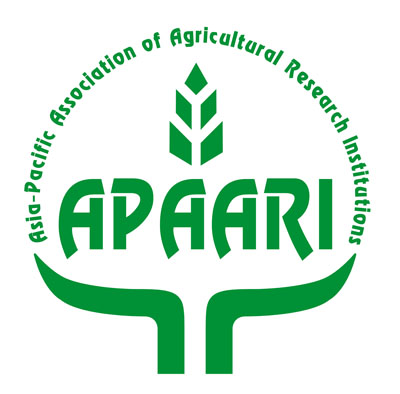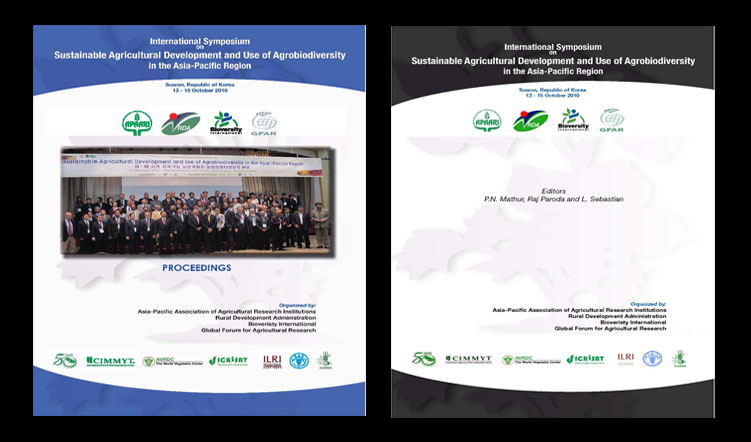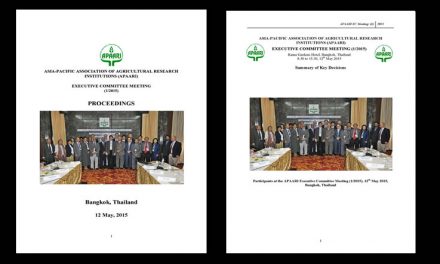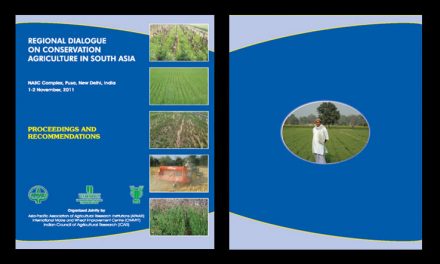Ensuring the availability of and access to food, in both quantity and quality (nutrition and food safety) for the world’s population remains a daunting challenge. This is even more so, given the background of declining natural resources, increasing human populations, and the growing phenomenon of climate change. Agriculture would need to both adapt to these changes, and increase production of nutritious food for the world’s population; especially for the poor in developing countries and regions.
Agricultural biodiversity is a key resource that will be needed for achieving this food and nutritional security. The bene?ts from agricultural biodiversity include its use as source of traits for crop and livestock improvement, through breeding and biotechnology applications. Agricultural biodiversity is also important in its direct use; through wise deployment of diversity, agricultural systems bene?t from greater resilience, stability and sustainability, and contribute to the provision of better ecosystem services. Direct use of agricultural biodiversity also contributes to better nutrition and health, and is a source of increased incomes and improved livelihoods.
The Asia-Paci?c region is the largest supplier of the world’s food and agricultural products. It houses about 58% of the world’s population but has only 38% of the world’s agricultural land. Attainment of Millennium Development Goals (MDGs), particularly alleviating poverty, assuring food security and environmental sustainability, presents a major challenge to development in this region. Fortunately, the region is the centre of diversity of many important species of crops, livestock and forest tree species. Furthermore, resource poor farmers in the region are largely dependent on agrobiodiversity of minor crops, wild relatives of plant and animal species for their food security and livelihood.
Despite the seeming importance of agrobiodiversity for food and agriculture in the region, there is a continuing loss of this important resource, due to human interventions and natural events. The large scale adoption of a few improved varieties of a limited number of crop species has resulted in displacement of many traditional varieties and the loss of traditional knowledge associated with them. Recognizing these concerns, efforts have been ongoing by various international and regional organizations and the national governments towards collecting, documenting and conserving agricultural genetic resources. This has culminated in the establishment of genebanks in some international centres and countries.
The need for further strengthening agricultural biodiversity conservation and use, particularly at the regional level is widely felt. In view of this, an International Symposium on “Sustainable Agricultural Development and Use of Agrobiodiversity in the Asia-Paci?c Region” was jointly organized by the Asia-Paci?c Association of Agricultural Research Institutions (APAARI), Bioversity International and the Rural Development Administration (RDA) of the Republic of Korea at Suwon, Republic of Korea, on 13-15 October, 2010. The symposium provided an opportunity to review, identify and rede?ne the role and direction of agricultural R&D for the conservation and use of agrobiodiversity for development. It was attended by eighty four participants from 32 countries, as well as from regional and international organizations.
The symposium was structured into ?ve technical sessions and four working groups. Indepth deliberations resulted in useful outputs and recommendations. The participants also adopted the Suwon Agrobiodiversity framework that shows the way forward for access and bene?t sharing of genetic resources and evoking required awareness concerning genetic resource management. These recommendations are expected to be translated into action by the respective countries and organizations and build on the momentum for future agrobiodiversity research and development activities in the region. We look forward partnering with NARS, regional and international organizations and donors in developing appropriate actions to implement the recommendations of the symposium.
This publication summarizes the proceedings and recommendations of the symposium and we hope that its wide circulation will generate awareness and draw attention for appropriate action by NARS and other partners/ stakeholders to implement the recommendations. This will also be immensely useful to policy makers, research managers, development agencies, farmers and students.
Symposium on Sustainable Agricultural Development 2010 (4050 downloads)





